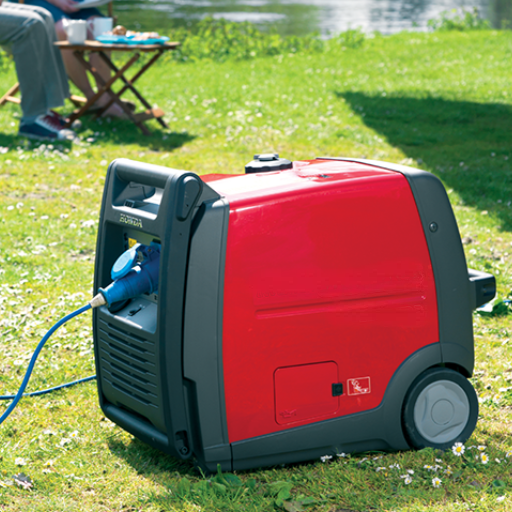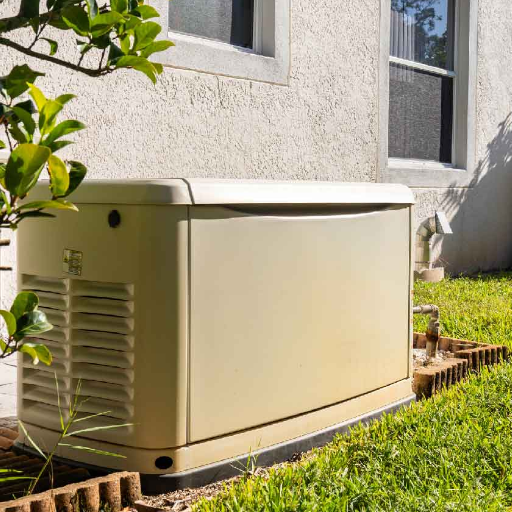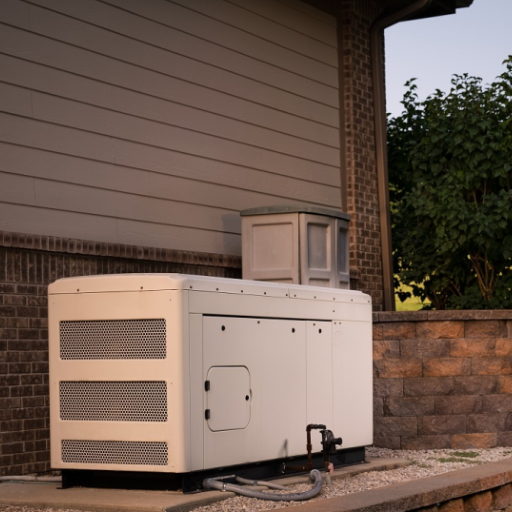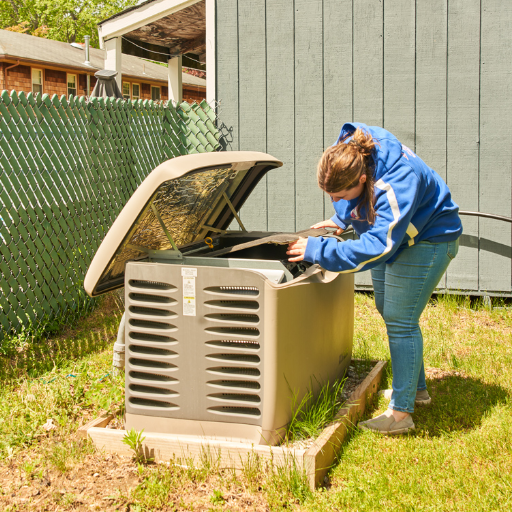When it comes to maintaining an uninterrupted power supply during outages, selecting the right whole-house generator and having it installed by qualified professionals are critical steps. A whole house generator ensures that essential systems and appliances continue functioning seamlessly, safeguarding your comfort and security. This guide aims to provide a comprehensive overview of top-rated whole-house generator installers, offering insights into the installation process, key considerations when choosing a standby power solution, and expert recommendations to make informed decisions.
What size generator do I need for my whole house?
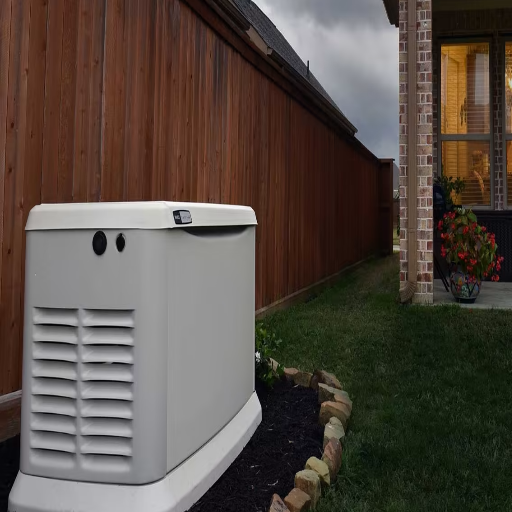
Calculating your home’s power requirements
To assess the power needs for my home, I must calculate the wattage for all the pertinent appliances and systems that I wish to operate during an outage. This entails figuring out starting (surge) and running wattages because certain devices, like refrigerators or HVAC systems, consume significantly higher levels of energy when they turn on. This is one way I can go about it:
- Compile a List of Essentials: I need to prepare a list of basic appliances such as water heaters, refrigerators, HVAC systems, ovens, electronics, diverse light fixtures, and everything in between.
- Review Power Ratings: Each appliance usually comes with a label that states what its wattage is.
- Account for Surge Wattage: Devices with motors (air conditioners or freezers), for example, may need 2-3 times the amount of their running wattage for starters. This can also be found in the user manual or strictly from the manufacturer’s specifications.
- Add a Safety Margin: Adding on an extra 25-30% buffer on top of the calculated wattage provided on paper is imperative if a generator application is needed. This is done so that unexpected and out-of-the-ordinary surges or deviations from set demand do not create panic.
My calculated essentials require 7,000 running watts at the bare minimum and a peak surge of 10,000 watts, I would have to choose a generator that rests at an average level of 8,750 to 10,000. This range ensures a dominant amount of value without the generator being overworked, allowing smooth and dependable operation.
Matching generator size to your HVAC system
I must calculate my HVAC system’s power needs to determine what size generator I need to purchase. This involves both the running wattage and the starting (surge) wattage of the unit. For instance, central air conditioning systems typically need more wattage because of their compressor and fan motors.
- Identify Running Wattage: A standard central air conditioner, depending on size, typically requires 1,500 to 4,000 running watts.
- Determine Starting Wattage: Starting wattage for most appliances is usually 3 or 4 times more than the running wattage because of the additional power that is required to start the compressor and fan motor. For example, a unit with 2000 running watts may need as high as 8000 watts during starting.
- Add a Safety Margin: Adding a safety margin of 25 to 30 percent ensures that the generator can tolerate fluctuations in load.
With these calculations, I guarantee smooth operation without system overload or damage during functioning. Based on my HVAC system specifications, choosing the right generator size assures performance and avoids unnecessary strain on the generator and the appliances.
Considerations for natural gas vs. propane generators
Both natural gas and propane will aid in fueling generators with each having its pros and cons which one must properly take into account. On the technical side, natural gas offers an endless supply as it is tied directly to utility pipelines eliminating the need for refueling. Storage tanks are needed for propane, however, propane offers higher energy density where 1 gallon of propane contains approximately 91,500 BTUs as opposed to natural gasses 1 cubic foot at around 1,037 BTUs. In propane’s case, having lower carbon content further aids in cleaner combustion which ultimately lowers the maintenance needed from the generators components.
- Logistics and supply fuel: Provided I have good and reliable utility natural gas access, it is very reasonable for me to consider using it for natural gas. Nevertheless, propane does have the upper hand when supply is restricted due to the ability to store it ensuring operational reliability.
- Cost efficiency: Given the constantly changing economic factors in price and demand, the cost of fuel significantly changes from one region to another. In my case, local pricing would also have to be analyzed to decide the most cost effective solution.
- Generator efficiency: Just as with any market, generators have their rated outputs and efficiency that must be assessed alongside the fuel it uses as some components might work better with other fuels.
- Storage and safety: For both scenarios, the use of natural gas completely removes storage problems, but it carries its own set of risks in terms of line disturbance. In the case of propane tanks, a sizable amount of space is required along with the observation of safety protocols.
In assessing these factors systematically, I would ensure the best-fit solution for uninterrupted, efficient, and safe generator operation.
What’s the process of installing a whole home generator?
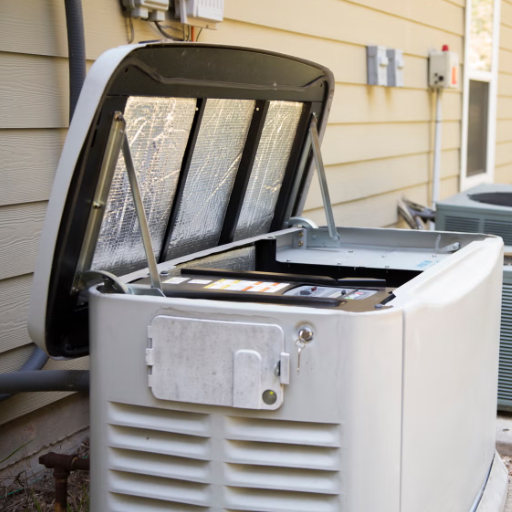
Site preparation and permitting
Installation of the generator starts with a designated area that needs to be prepared thoroughly so local regulations are met and it functions perfectly. The area should be adequately open, more than 5 feet from windows, doors, and any flammable items, and on a solid flat ground to functionality problems.
To comply with legal requirements there is submission of modules that permit construction and electrical works consisted of an area. The application needs to cover implementation of fuel type, size of the generator, and voltage level alongside other parts to guarantee safety and functionality. There may also be some inspections needed when applying to check if zoning regulations and noise control are followed through to.
This phase is the most important since it facilitates the effective and safe installation of the generator while ensuring there are no regulations violations and safety concerns.
Generator placement and connection to the home’s electrical system
To comply with relevant regulations while also ensuring safety and maintaining the generator’s efficiency, its placement is critical. To prevent carbon monoxide poisoning, the generator should be located at least five feet away from windows, doors, and ventilation intake. The generator should also be placed on stable and level ground, usually a concrete slab. Furthermore, local codes may mandate the generator to adhere to property distances from boundaries.
- Installation of Transfer Switch: To eliminate the possibility of backfeeding, a generator requires a transfer switch to connect safely to the home’s electrical panel. This helps lower the risk of harming utility workers and the power system.
- Load Capacity: 5 Automatic Transfer Switches (ATS) are highly suggested due to the ease they provide in switches being automatic; their typical range is 30 to 200 amps, which allows them to cover the majority of household electrical loads.
- Grounding: Failing to follow National Electrical Code (NEC) grounding rules for the generator poses an elevated threat of electric shock or device malfunctions. Examine the generator’s neutral, and frame bond it. Ensure that local grounding requirement is satisfied.
- Wiring or Conduit: The wiring conductor size should be sufficient as per the generator’s amperage rating and distance from the transfer switch. For example, a 50 amp generator will require a 6 AWG copper wire for less than 50 foot distances, some adjustment is made for voltage drop over greater distances.
It is best practice to consult a licensed electrician regarding the installation and evaluation of the work done.
Testing and commissioning your new standby generator
The steps that I would take to test and commission the standby generator are very crucial to its effective functioning and need to be complied with. My first step would be to check all electrical connections against the required voltage and amperage. For example, let us assume that my system needs 240 volts, and the generator has an output of 50 amps.
After this, I would test the load by configuring the generator to power the essential circuits in my house to see how the generator functions in reality. This will verify that the unit can indeed support stable power output. Furthermore, I would check the power output frequency and the voltage level with a multimeter to confirm that they are within acceptable limits.
After having verified these processes, I then will turn towards the installation manual to look for operational test requirements and maintenance schedules, taking care to record all outcomes for future use.
How do I choose between a portable and a standby generator?
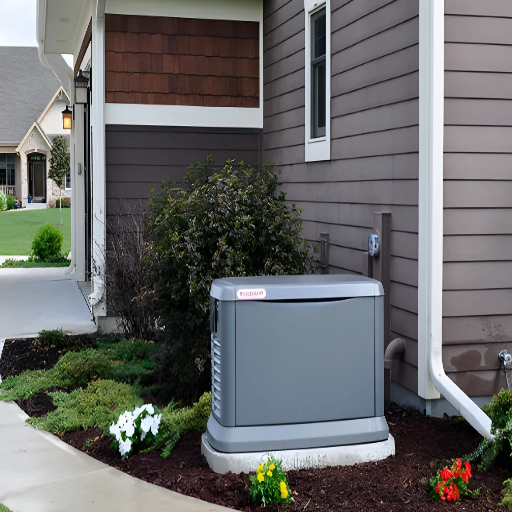
Comparing power output and convenience
Various aspects have to be analyzed when comparing outputs, output, and comfort level of use between standby and portable generators.
In the case of portable generators, power output is in the range of 2,000 watts for appliances and light usage during outages to about 10,000 watts at the higher end. They tend to be quite light, mobile, and inexpensive as the cost is usually under $500 but can go up to $2,500 depending on the wattage and properties. One downfall they have is that they need to be manually operated, meaning fueling, starting, and even connecting the generator to an appliance or transfer switch have to be done physically which can be a bit of a hassle in the case of an emergency which defeats the generator’s intended purpose.
Using contrast, standby generators can have anywhere between 8,000 watts at minimum power output to upwards of 50,000 watts for much higher output generators. With these you can power entire homes or even complex systems. Their downsides are costly with installation often requiring $5,000+, and frequent maintenance will be needed.
Among the technical considerations to be made are the fuel type (gasoline, propane, or natural gas), the noise level (in decibels), the run time, and for electrical power systems, the quality of the energy provided (Total Harmonic Distortion, THD, is critical for delicate electronics and should be preferably less than 5%).
Long-term costs and maintenance considerations
While considering long-term expenses, one must take fuel prices for the respective generator, component replacement, and service maintenance into consideration. Understanding fuel consumption through quantitative measures such as gallons or cubic feet burned per hour assists in understanding operational costs over an extended period. Also, maintenance tasks like air filter replacement, oil changes, and sparkplug inspections must be performed based on a guideline that ranges from 100-200 operational hours, depending on the type of generator.
- Fuel Efficiency: Calculate cost-per-hour based on fuel burn rate and price per unit volume of volume.
- Run Time: The assumed operational time of the generator until its next refueling is dependent on the available fuel tank capacity and load.
- THD Rating: Verify that Total Harmonic Distortion does not exceed a value of 5% so it remains compatible with sensitive electronics.
- Noise Level: Check the decibel rating when placed under certain loads and determine which values serve as a threshold; lower is better because quieter is more appropriate for residential regions.
- Maintenance Intervals: Ensure a schedule- for instance, every 100 hours of operation results in an oil change- is strictly followed in order to reduce excessive wear.
In the assessment of these criteria, I am able to anticipate both direct and continuing costs with reliability and performance over the generator’s lifetime.
Peace of mind: automatic vs. manual operation
The level of convenience needed for a given application determines the system’s operational method. For example, the semiautomatic operation is more convenient for a power generator that automatically turns ‘ON’ when there is a disconnection of the power supply from the utility company. Such operation is common with critical systems like medical units and data servers. In most cases, such systems require an Automatic Transfer Switch (ATS), which serves both as a phase selector and as a protective relay to monitor the power supply and connect the generator as necessitated. The response time of an ATS is usually less than 10. On the other hand, a manual operation starts and stops a generator at will, offering greater control, but can delay the restoration of power when there is an emergency that requires immediate attention.
- Startup Time: Automatic systems come in within 5-10 seconds while manual ones depend on how fast I can get to the operational controls.
- Ease of Use: More remote sites or sites not manned by personnel benefit from automatic systems as no manual labor is required.
- Cost: Outages are time-consuming, and saving time and effort during outages costs more with setting up Automatics and the ATSs.
- Control Flexibility: With so much control that can be exercised Manual operation enables unnecessary wear and tear savings, plus unlike in auto operation less run time is experienced when not needed.
After analyzing the trade-offs regarding convenience, cost, and operational requirements, I can identify and choose the most appropriate mode, which will meet my specific needs and also function reliably.
What maintenance does a whole-house generator require?
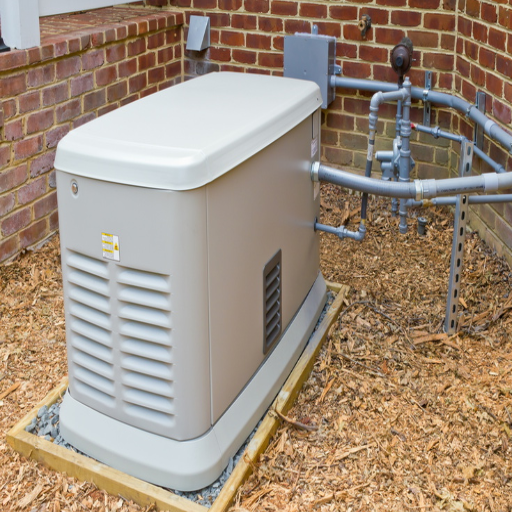
Regular maintenance schedule for standby generators
To achieve peak productivity and dependability, a whole-house standby generator should follow a maintenance routine. The most crucial parts of this routine are presented below:
- Weekly Self-Check: The majority of contemporary standby generators conduct a self-diagnostic test every week. Make sure this option is on and watch for any irregularities or fault codes in the system.
- Oil Changes: Replace engine oil depending on the model and usage for every 50 to 100 operating hours or annually.
- Air Filter Replacement: For every 200 to 250 operating hours or annually, check and replace the air filter. Failure to replace can cause an obstruction which compromises engine efficiency and performance.
- Spark Plug Inspection: As per manufacturer recommendations, check plugs every 300 to 200 hours or spend 100 hours on the engine.
- Battery Maintenance: For precautionary measures, tester the starting battery after a year and swap it out after 3 – 5 years. Aiding in ensuring sufficient charge.
- Coolant System: Coolant must be replaced every 2-3 years to prevent degradation while also checking hose and clamp for cracks or leaks.
- Load Bank Testing: Conduct a load bank test every one to two years to guarantee the generator is still capable of managing its rated load and to mitigate carbon accumulation in the engine.
Adhering to these preset guidelines enables the generator to perform optimally, minimizes the chances of faults in the system, and enhances the overall longevity of the equipment.
Ensuring generator readiness for power outages
To be ready for any power outages, my utmost concern is proactive inspection as well as troubleshooting my generator. Starting from the basic checks, I run the generator for 15-20 minutes every month without putting any load on it while examining if the generator can start and run properly. It is also crucial that I monitor the oil level as not only does it lubricate the generator parts, but it also ensures the generator operates smoothly when between the marked minimum and maximum dipstick values. Each week I also check the coolant and oil levels, as well as visually check for any wear and tear on the hoses, belts, and connections.
On a monthly basis, I conduct a visual examination of the generators hoses, belts, and connections for any signs of leaks or wear and tear. During these tests, I supervise the frequency and voltage to verify they are well within the voltage and frequency specifications, with the voltage for most residential units being set at 120/240V and the operating frequency being set at 60 Hz.
Load bank testing is done for me once every one or two years by professionals to guarantee the generator is able to reach its load capacity in controlled conditions. To maintain maximum operational efficiency, I clean the dirt and debris from the generator housing, just as I clean the air filter and check the spark plugs for wear and tear or blockage. At this time, I also check the functionality of the automatic transfer switches to confirm there are no issues when the power needs to be switched during an outage.
Following these practices allows me to keep my generator in good working order while reducing, to the maximum extent possible, the chances of it failing at the most crucial time.
Are there any limitations to what whole home generators can power?
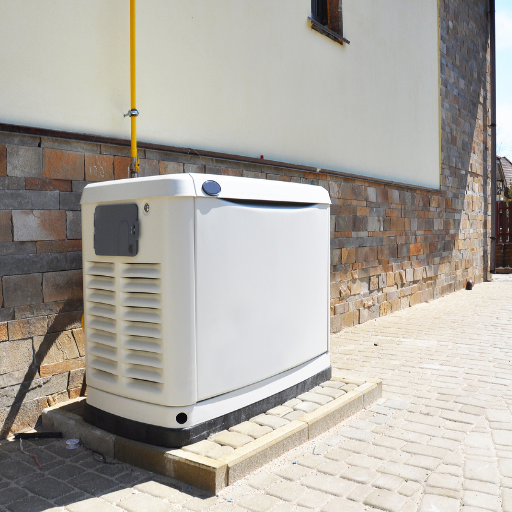
Generators’ capabilities during extended power outages
While analyzing a generator’s performance during long periods of inactivity, it is critical to keep in mind what its specifications are and what its limitations are operationally.
- Fuel Consumption Rate: Most generators have a proportional relationship of fuel consumption with the load. For example, a 5 kW generator might use 0.75 to 1 gallon of gasoline per hour at full load. Therefore, fuel storage becomes an important consideration during extended outages because the generator would need to be refueled frequently. Always make sure to have sufficient backup fuel supply while ensuring all safety regulations are adhered to.
- Run Time and Maintenance Schedule: A generator’s run time is operationally contingent on the design of the unit. Many portable generators are rated for 8-10 hours at 50% load before they need to be refueled. Standby generators, on the other hand, have a reputation of running quite efficiently, as long as there are scheduled oil and filter changes to be done after 100 – 250 hours of usage, as per a standard manufacturer’s guideline.
- Load Capacity vs. Actual Usage: To ensure sustainability, generators need to exert from 50 to 75 percent of their rated load capacity. Too much loading may result in overheating and resultant damage, while too little loading may cause carbon deposit formation.
- Voltage Regulation and Stability: Quality generators have automatically set voltage regulators (AVR) which set the output voltage to a value close to a certain set point. This comes in handy for sensitive electronics, for which damage may be caused by sudden voltage changes.
- Cooling and Ventilation: Prolonged operation requires proper cooling to avoid overheating. Liquid-cooled generators have better efficiency for long-term use with air-cooled ones needing adequate ventilation to function, otherwise, there is a risk of unaddressed heat build-up which would cause a shutdown.
- Compliance with Local Codes: Generators must abide by local regulations concerning emission and safety standards. For example, EPA-compliant generators reduce the impact on the environment The more a generator is to be used, the more relevant this consideration becomes.
By thoroughly planning within these boundaries, it is possible to optimize the use of the generator, protect essential systems, and mitigate the impact of prolonged power outages.
Balancing essential vs. non-essential power needs
While operating a generator, it becomes exceedingly important to recognize and define the systems which must be kept active for safe and efficient operation, which typically make up the power essential requirements. Essential loads include appliances and systems which are vital for the continued operation of a facility, such as medical devices, refrigeration units, HVAC systems, and communication units.
- Wattage Rating: Find out the starting (surge) and running wattage for all relevant appliances. For example, refrigerators generally have surge requirements of 1,200-1,500 watts and operational requirements of 200-800 watts. The generator’s output should always exceed the total combined load of all running appliances to minimize the chances of overloading.
- Power Factor: the power factor has an effect on the active power consumption of inductive loads such as motors.
- Generator Load Capacity: For best performance and durability, running a generator at 75-80% capacity is recommended. As such, a generator with a rated output of 10 kW should not have an 8 kW load continuously placed on it.
- Phase Requirements: limitations about the number of output phases for a generator, which can be either single or three-phase, need to be factored into the device selection, particularly for industrial settings.
- Load Prioritization and Sequencing: To mitigate surge impacts during startup, utilize a transfer switch or load management system which will also proactively balance power between devices as required.
By considering these aspects with great care, you would be able to rationally distribute power, minimize generator strain, and continue to function effectively during prolonged outages.
Reference sources
Heating, ventilation, and air conditioning
Frequently Asked Questions (FAQs)
Q: What is the average generator cost for a whole house standby system?
A: The generator cost for a whole house standby system can vary widely depending on the size and type of generator. On average, you can expect to pay between $7,000 to $15,000 for the unit itself. However, when factoring in installation costs, the total price can range from $10,000 to $20,000 or more.
Q: How does the generator installation process work?
A: The generator installation process typically involves several steps: 1. Site assessment by a professional installer 2. Obtaining necessary permits 3. Preparing the installation site (concrete pad or platform) 4. Installing the generator and transfer switch 5. Connecting the generator to your home’s electrical system and fuel source (natural gas or propane) 6. Testing and commissioning the system It’s crucial to hire an electrician or certified generator installer to ensure proper and safe installation.
Q: What size generator do you need to power your entire home?
A: The size generator you need depends on your home’s specific power requirements. To power your entire home, including essential appliances and HVAC systems, you typically need a generator ranging from 20 to 30 kilowatts for an average-sized house. However, to determine the right size generator for your needs, it’s best to have a professional assess your home’s electrical load and recommend an appropriate unit that can handle your power demands.
Q: What are the differences between portable generators and home standby generators?
A: Portable generators and home standby generators differ in several ways: 1. Size: Portable generators are smaller and can be moved, while standby generators are permanent installations. 2. Power output: Standby generators typically provide more power and can run your entire home, while portable generators are limited in capacity. 3. Fuel source: Portable generators usually run on gasoline, while standby generators use natural gas or propane. 4. Automatic operation: Standby generators start automatically during a power outage, whereas portable generators require manual start-up. 5. Cost: Portable generators are less expensive upfront but may have higher long-term costs due to fuel and maintenance.
Q: What type of generator maintenance is required for whole house systems?
A: Generator maintenance for whole house systems typically includes: 1. Regular oil and filter changes (usually annually or after 200 hours of use) 2. Checking and replacing air filters as needed 3. Inspecting and cleaning spark plugs 4. Checking battery condition and connections 5. Testing the automatic transfer switch 6. Ensuring proper fuel supply and connections 7. Scheduling annual professional inspections Proper maintenance helps ensure your generator is ready to provide backup power when needed and extends its lifespan.
Q: Can I install a whole house generator myself, or should I hire an electrician?
A: While it may be tempting to install a whole house generator yourself to save on costs, it’s strongly recommended to hire an electrician or certified generator installer. The installation process involves complex electrical work, fuel line connections, and compliance with local codes and regulations. Improper installation can be dangerous and may void your warranty. Professional installers ensure your generator is safely and correctly connected to your home’s electrical system and fuel source.




